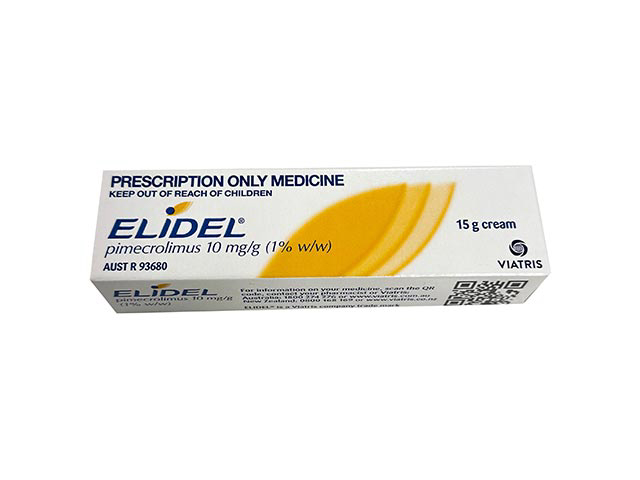Main menu
Common skin conditions

NEWS
Join DermNet PRO
Read more
Quick links
Author(s): Dr Michael Barrett, West Suffolk Hospital, Bury St Edmunds, Suffolk, United Kingdom (2024)
Previous contributors: Vanessa Ngan, Staff Writer, 2004
Reviewing dermatologist: Dr Ian Coulson
Edited by the DermNet content department
Introduction
How it works
Uses
How to use
Precautions
Side effects
Pimecrolimus is a topical steroid-free medication with immune-modulating and anti-inflammatory properties, used to treat atopic dermatitis.
It is classified as a calcineurin inhibitor and an ascomycin macrolactam derivative; ascomycin is produced by Streptomyces hygroscopicus.

A tube of pimecrolimus cream
Pimecrolimus is approved for the short-term and intermittent long-term treatment of atopic dermatitis in patients who are over 3 months of age where topical corticosteroids are deemed inappropriate. In some countries, such as the United States, it is only approved for use in those over 2 years old. It provides a steroid-free alternative for helping control the itching and inflammation caused by atopic dermatitis.
Pimecrolimus cream may be useful in many other inflammatory skin conditions that respond to topical steroids. For example, it is used off-license for facial, flexural, or genital psoriasis. There is a growing body of evidence for the use of pimecrolimus cream in other skin conditions, on the specialist advice of a dermatologist.
The following immune-modulating effects have been noticed:
Pimecrolimus cream is a prescription medicine and should be used only as directed by your doctor. Pimecrolimus cream may be applied to all skin surfaces including the head, face, neck, around the eyes, and skin folds.
Frequency |
Side effect |
Very common |
|
Common |
|
Uncommon |
|
Rare |
|
Very rare |
|
There have been some reports of skin cancer and lymphoma in patients treated with pimecrolimus cream. However, a causal relationship has not been established. A recent meta-analysis showed evidence with moderate certainty that calcineurin inhibitors do not increase the risk of cancer.
Approved datasheets are the official source of information for medicines, including approved uses, doses, and safety information. Check the individual datasheet in your country for information about medicines.
We suggest you refer to your national drug approval agency such as the Australian Therapeutic Goods Administration (TGA), US Food and Drug Administration (FDA), UK Medicines and Healthcare products regulatory agency (MHRA) / emc, and NZ Medsafe, or a national or state-approved formulary eg, the New Zealand Formulary (NZF) and New Zealand Formulary for Children (NZFC) and the British National Formulary (BNF) and British National Formulary for Children (BNFC).